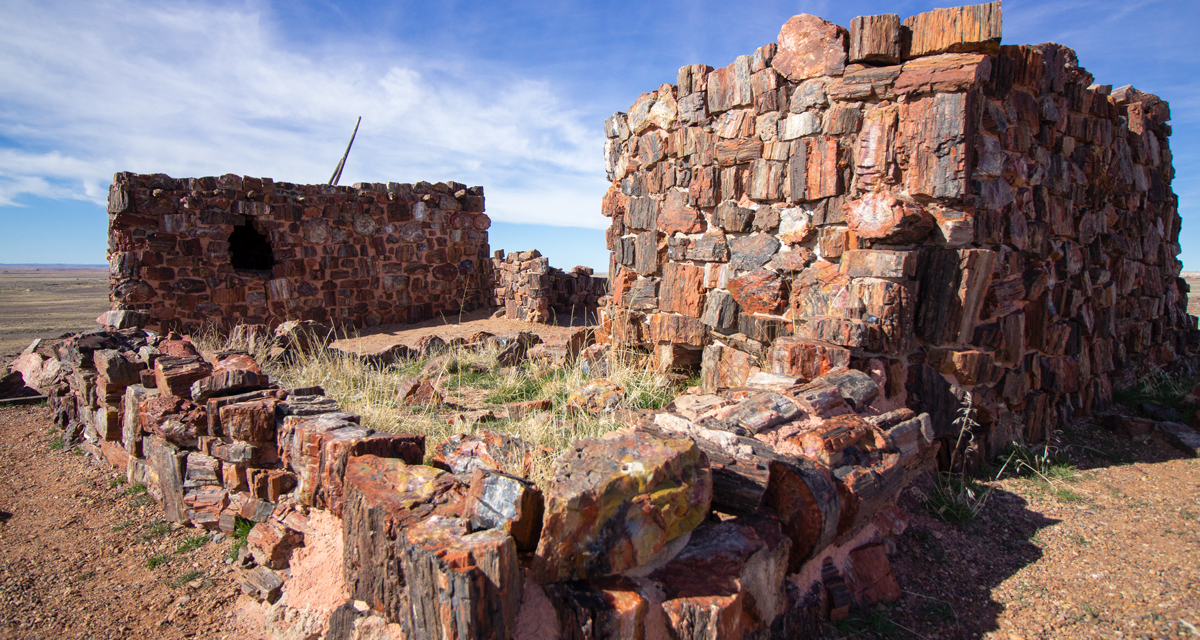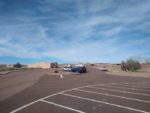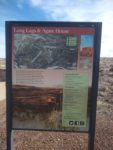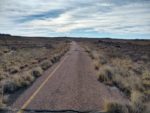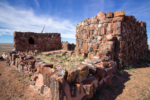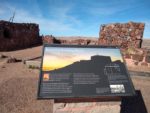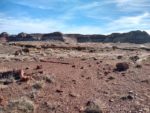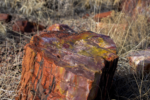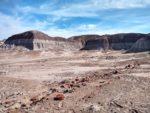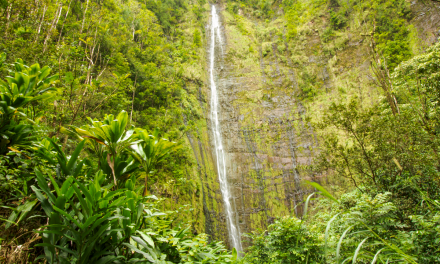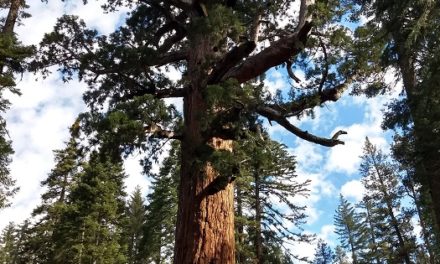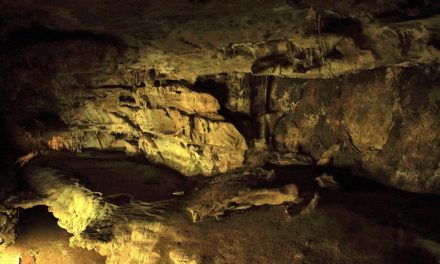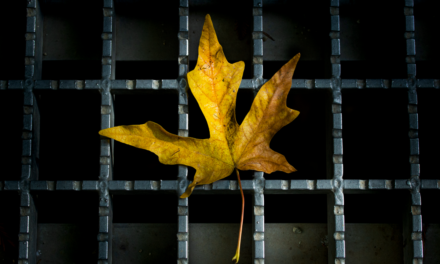Long Logs and Agate House Loop is a short hiking trail in Petrified Forest National Park. The hiking path highlights the petrified wood that can be seen throughout the park. The trail also features a reconstructed replica of a Pueblo made from petrified logs.
Long Logs and Agate House Hiking Trail Guide
The Four Corners region of the United States features some of the most unique landscape in the country. Known as the Colorado Plateau, this region includes several popular national parks. The southeastern edge of the plateau in northern Arizona is home to Petrified Forest National Park. This national park is known for its reptilian and tree fossils as well as a large area of vibrantly colored landscape known as the painted desert. The Long Logs and Agate House Loop trail is a great introduction to this national park. These trails can be done individually however it makes more sense to do them combined in a loop. Both trails have the same trailhead and are side by side. In-fact, even if you skip the Agate House, it can be seen a short distance away from the majority of the Long Logs trail. This trail includes some of the highest concentrations of petrified wood in the entire park. Other views will include the base of gray and purple rolling badlands and the plains of the high desert south of the park boundaries. It is important to note that prior to European exploration and arrival, this region was highly valued by Native Americans for over ten thousand years. The area within Petrified National Forest served as an important trade and migration route for the people’s of the Pueblo, Zuni, and Hopi. Surrounding the park’s borders is the territory of Navajo Nation.Long Logs Trail History
Prior to being the high desert plains and Painted Desert of northern Arizona that it is today, the area was once an immense floodplain. The tropical environment was home to many pre-historic species of amphibians and reptiles during the Triassic period approximately 225 million years ago. The current long logs are a remnant of a large scale flood 200 million years ago. In the flood, prehistoric trees were buried by immense layers of sediment. The logs were buried so deep that oxygen was cut off from the decaying process. Sediment and volcanic ash in the water allowed organic matter to slowly be replaced with a variety of minerals. Today the fossilized trees are mostly made up of quartz and are a reminder of an environment that once was.Agate House History
From a more recent historical perspective, the area within Petrified National Forest was used in large part by the ancestral Pueblo people. These people found a use of the petrified wood which included knives, scrapers, and projectile points. The Agate House represents how these people used petrified pieces of wood to construct houses for living in. Throughout the park there have been hundreds of similar structures found throughout the park. This house was reconstructed during the winter of 1933-34. Although it is not an exact replica, it was intended to portray what such homes looked like. This replica is an eight room pueblo is thought to have been occupied sometime between the years 1050 and 1300. Throughout the trail this home can be seen sitting on top of a hill in the Rainbow Forest area of the park. Today the Agate House is on the National Register of Historic Places.On A Personal Note
This was a fun trail to do as an introduction to the park. The south end of the park is where the highest concentrations of petrified wood is. The wood is actually pretty neat. The fossilization gives the trees a crystal like appearance and the mineral composition gives of a near rainbow color in the bright sunlight. Although this trail doesn’t have the mountainous views that I typically enjoy, this trail is beautiful from a historical perspective. As a reminder, it is a criminal act to steal any petrified wood, fossils, or Native American artifacts. Please remember to always leave no trace when visiting the outdoors. Have you hiked this trail recently? Please share any trail updates/pictures in the comments below.- Overall Difficulty: 25%
- Overall Views: 60%
Long Logs and Agate House Loop Trail Quick Facts:
- Elevation: 5433 feet.
- Elevation Gain: 46 feet.
- Estimated Distance: 2.11 miles.
- My Actual Distance: 2.61 miles.
- Estimated Time: 45-90 minutes.
- My Time: 59 minutes moving; 1 hour 9 minutes total.
Long Log and Agate House Loop Trail Directions:
Open in maps. The trail entrance is directly off of Petrified Forest Road. Parking can be found about a quarter of a mile away at the Rainbow Forest Museum. There is ample parking. The trailhead is located just past the bridge that runs over the nearby wash. Cost is the price of admission to the park. An America The Beautiful Pass will also work. The park does have limited hours and is not open 24/7. Please keep that in mind when visiting.
Long Logs and Agate House Loop Trail Pictures:
- Parking is located at the Rainbow Museum.
- Trailhead information.
- The first portion of the trail is paved as well as the portion leading up to the Agate House.
- The Agate House.
- Additional information about the Agate House.
- Looking out along the Long Logs trail towards some of the edges of the Painted Desert. Although it looks like rocks, these are actually petrified logs in the pictures.
- A close up of petrified wood. The rainbow appearance is due in part to a variety of different minerals.
- The red and brown hues of the edges of the painted desert sit along this trail.
Who Long Logs and Agate House Loop Trail Is For
Novice Hikers: This is a great trail for new hikers, families, or people who are unable to do long hikes. As I mentioned already, this trail is a great introduction to this historical aspects of this park.
Advanced Hikers: Although this trail is not long by any means, it’s a great way to get your legs moving if you have just one day to spare in the park. The large concentration of petrified wood was a unique view in itself.
Expert Hikers: This is not a tough trail by any means but let that keep you from enjoying the historical perspective of the trail.
It’s always a good idea to be aware of what type of hiking level you’re at.
Best Time Of Year To Hike Long Logs and Agate House Loop Trail:
This national park experiences a full four seasons as far as temperature is concerned. Spring and Fall have mild temperatures. Winters can be cold with occasional snow and light rainfall. The growing season is short here during the spring. The plants green up during a couple of months and wildflowers can be seen from the end of March to May.
As summer nears the temperatures also increase. Between the months of July to September it’s not uncommon for there to be temperatures upwards of 100 degrees. Summer is also the rainy season. The monsoon season kicks into gear starting in late June and tapers off in September. It’s not uncommon for there to be heavy downpours, lightning, and periodic flooding. Most of the park’s rainfall takes place between the months of July to September.
If you hear thunder, it’s not a good idea to be out along the open trail. Instead, seek shelter so that you won’t be the tallest object standing in an open field during a lightning storm.
It’s always a great idea to check the weather before a hike.
Long Logs and Agate House Loop Trail Conditions:
The Long Logs and Agate House Loop trail is in great condition and maintained by the National Park Service. Although this is listed as loop trail it is actually more of a lollipop trail. There are two options: you can either do the long logs portion of the trail or the Agate portion. At 0.4 miles the trail will branch out. To the right will lead to the Agate House and to the left will continue on through the Long Logs trail.
The portion of the trail leading up to the Agate House is composed of old pavement with a few short steps along the way. Most of the trail along the Long Logs portion is on compacted dirt/sediment. There is no shade along the trail so drress accordingly. Please be aware that rattlesnakes are common in this area. There is no poison ivy along the trail.

